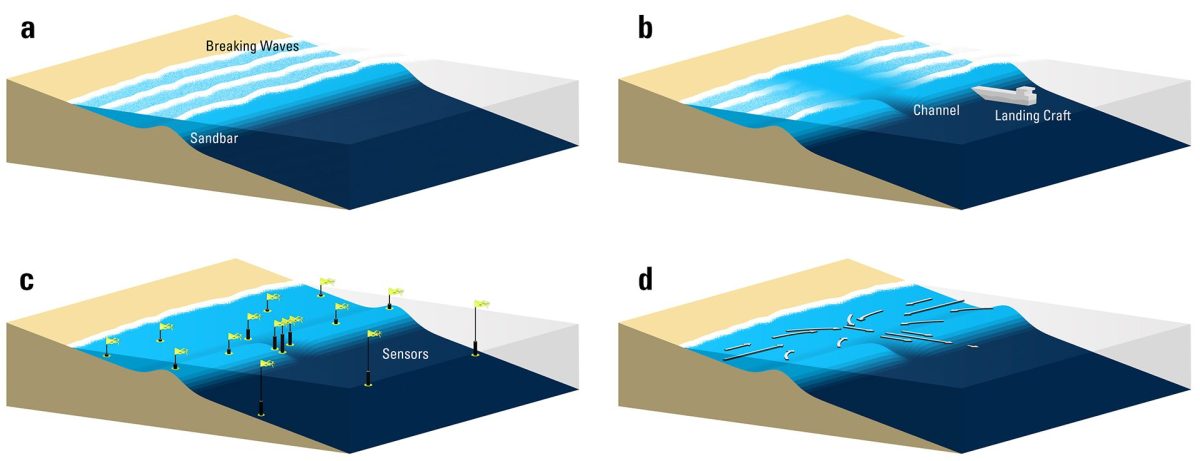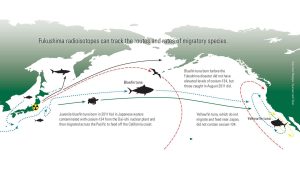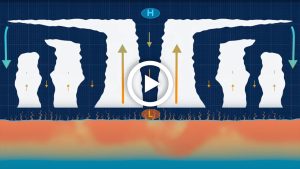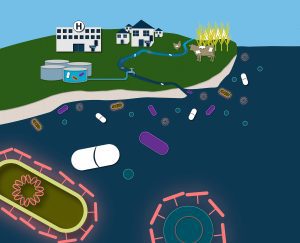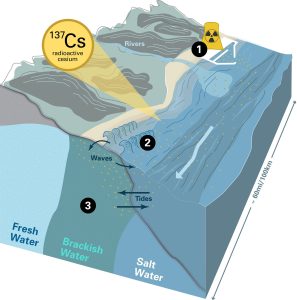a) Waves tend to break where the water is shallow, atop sandbars for example, but not where the water is deep.
b) WHOI researchers used a 73-foot-long landing craft to create a 150 foot-long, 90-foot-wide, and 6-foot-deep channel interrupting a sandbar at a research beach in Duck, N.C. The channel induced the formation of rip currents that the team could study.
c) To study the dynamics of rip currents, the WHOI researchers installed arrays of sensors near the channel to collect data on wave heights, flows, water pressure, seafloor topography, and tidal elevation.
d) Waves break on the shallow sides of the channel—not in it—causing water to pile up unevenly along the beach. Following the path of least resistance, water on both sides of the channel flows swiftly toward the low-lying channel. Then it rushes in a torrent through the narrow escape conduit back out to sea. Thats a rip current. (Illustration by Eric S. Taylor, © Woods Hole Oceanographic Institution)
Image and Visual Licensing
WHOI copyright digital assets (stills and video) contained on this website can be licensed for non-commercial use upon request and approval. Please contact WHOI Digital Assets at images@whoi.edu or (508) 289-2647.
